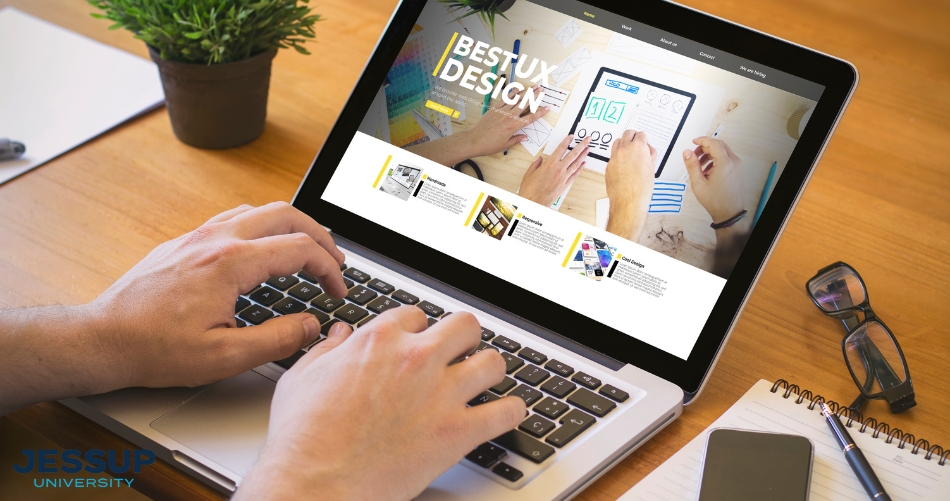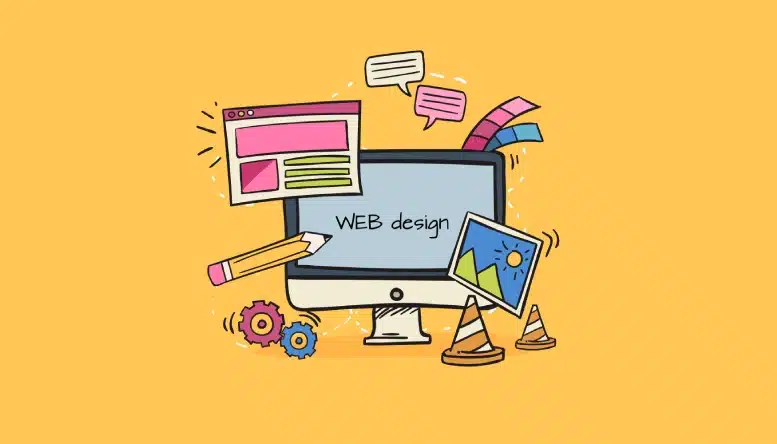Exactly How Ingenious Web Design Can Transform Your Brand Name Identity
Innovative web design plays an important duty in shaping a brand's identity. It functions as the electronic store front, affecting impressions and user involvement. Thoughtful layout selections can create remarkable experiences and foster commitment. The influence goes past visual appeals. Recognizing the underlying concepts of efficient web design can disclose its true possibility. What approaches could be employed to ensure that a brand not just attracts attention but likewise reverberates with its audience?
The Importance of First Impressions in Web Design
How essential is an impression in the domain name of web design? It acts as the preliminary entrance to user engagement, identifying whether site visitors will certainly explore more or desert the site. A website's visual and functionality can greatly affect understandings of a brand name's credibility and professionalism and trust. In an age where electronic interactions are instantaneous, individuals form opinions within secs, making visual charm and user-friendly navigation essential.
A reliable initial impression can promote trust and motivate expedition, while a poorly developed user interface might stimulate disappointment and hesitation. Aspects such as color pattern, typography, and format all add to this preliminary understanding. Furthermore, consistency in design across all web pages reinforces brand identity. Therefore, the relevance of very first impressions in web design can not be overemphasized; they not just dictate user retention yet also impact general user experience and contentment, eventually forming a brand's reputation in a competitive on-line landscape.
Crucial Element of Reliable Web Design
A website's effectiveness rests on a number of key components that operate in consistency to produce a favorable user experience. User-friendly navigating is essential, permitting individuals to situate information effortlessly. Succinct and clear web content enhances understanding and interaction, while strategic use of whitespace prevents overwhelming the viewer.
Responsive layout is one more vital aspect, seeing to it that the site functions well on numerous tools and display dimensions. Rapid loading times are necessary; slow-moving sites can bring about high bounce rates.
Aesthetic aspects, including premium photos and an appealing design, add to a visually pleasing experience that resonates with users. Lastly, accessibility should not be ignored, as it guarantees that all customers, no matter capability, can communicate with the site.
Just How Color Psychology Influences Brand Name Understanding
Color psychology plays a critical function in shaping brand name understanding, influencing customer feelings and actions in extensive means. Different colors stimulate certain sensations; for example, blue typically shares trust fund and professionalism, while red can generate exhilaration or seriousness. Brands tactically leverage these associations to enhance their identity and get in touch with their target market.
A tech firm may make use of a smooth blue palette to job reliability, while a food brand may decide for lively reds and yellows to promote hunger and power. The consistency of color throughout various systems reinforces brand recognition and promotes loyalty

Enhancing User Experience Via Cutting-edge Attributes
Various cutting-edge features can considerably boost user experience in web design, developing a much more interesting and intuitive interaction for site visitors. Interactive elements such as vibrant web content, computer animations, and responsive style warranty that users continue to be astounded and involved. Including attributes like chatbots can offer real-time support, boosting communication and resolving user questions instantaneously.
Furthermore, customized material based on user behavior promotes a tailored experience, motivating extended involvement. Access attributes, including voice navigating and display readers, guarantee inclusivity for all customers, better enhancing overall fulfillment.
Applying instinctive navigating, such as sticky menus More Help and breadcrumb routes, enables customers to locate info easily, decreasing stress. Integrating micro-interactions, like refined computer animations throughout switch clicks, can offer positive feedback, strengthening user actions. Eventually, these cutting-edge features work collectively to develop a smooth and delightful user experience, substantially enhancing the general assumption of a brand name.
Instance Researches: Brands That Transformed Their Identity With Web Design
Website design plays a pivotal role in forming a brand name's identification, as shown by different business that have successfully redefined their image through cutting-edge online experiences. A noteworthy instance is Airbnb, which overhauled its website to focus on narration and user-generated material. This approach not only enhanced user involvement but likewise enhanced its community-centric brand name identification.
In a similar way, the rebranding of Dropbox via a minimalist layout stressed simplicity and performance, lining up perfectly with its mission to make data sharing effortless. The brand-new visual identification cultivated a credible and contemporary image.
One more situation is Mailchimp, which moved from a simple e-mail advertising and marketing device to a full-fledged marketing platform. Its lively style and spirited images show a approachable and innovative brand name personality, interesting a broader audience.
These transformations show just how calculated web design can substantially affect perception, ultimately driving brand name loyalty and market growth. - Website Design Agency
Regularly Asked Inquiries
How Much Does Innovative Web Design Typically Expense?
Ingenious web design typically sets you back between $2,500 to $15,000, depending upon intricacy, attributes, and developer competence. Personalized services may exceed this array, mirroring the investment in high quality and performance that improves user experience.

What Are the most recent Web Design Fads to View?
The most recent web design fads include minimalism, bold typography, dark setting, interactive aspects, and immersive storytelling. These aspects boost user experience, making sure websites remain appealing and visually appealing in a significantly electronic landscape.
For how long Does a Web Style Project Usually Take?
A website design task commonly takes between 4 to twelve weeks, relying on factors such as complexity, customer responses, and the layout group's workload. Timelines might vary considerably based on particular task demands and objectives.
Can I Revamp My Website Without Losing SEO Rankings?
Yes, an internet site can be revamped without shedding SEO positions. Mindful planning, maintaining link structures, enhancing on-page elements, and updating backlinks help protect exposure in internet search engine during and after the redesign process.
What Operating systems Are Best for Implementing Cutting-edge Web Design?
Popular systems for cutting-edge web design include WordPress, Wix, and Squarespace. Each deals distinct functions, design templates, and customization options, enabling users to create practical and visually attractive websites that line up with their brand identity.
Ingenious internet style plays a vital function in forming a More Bonuses brand name's identification. Numerous cutting-edge functions can considerably boost user experience in internet layout, check my reference creating a more intuitive and appealing communication for site visitors. agency for web design. Interactive components such as vibrant web content, computer animations, and responsive style warranty that users stay mesmerized and entailed. Internet layout plays a pivotal role in shaping a brand name's identity, as evidenced by different business that have effectively redefined their picture through ingenious on the internet experiences. A web layout project typically takes between 4 to twelve weeks, depending on elements such as intricacy, customer comments, and the style group's workload